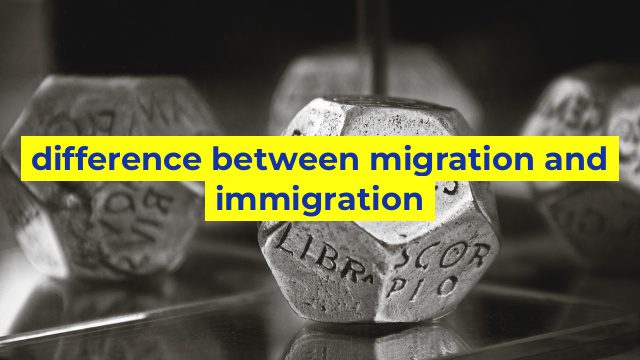The Key Differences Between Migration and Immigration
What is Migration?
Migration is the act of moving from one place to another whether it is regionally, nationally or internationally. Migration may happen for different reasons such as natural calamities, civil wars, political tensions, poor economic conditions or better job opportunities for the individual or the family.
People who migrate may move within a country or cross borders to another country in search of new opportunities. The process involves leaving their original place of residence to settle temporarily or permanently in a new location.
What is Immigration?
Immigration, on the other hand, can be defined as the process of moving to another country to become a permanent or temporary resident. This can be for an extended period of time, as a student or a worker, with the intention of settling there and potentially becoming a citizen of the host country.
In most cases, immigration happens due to economic, social or political reasons. Immigrants typically leave their home country to avoid being subjected to conflicts, economic difficulties or persecution. Many people also immigrate to access better living conditions, education, or job opportunities.
The Key Differences Between Migration and Immigration
The main difference between migration and immigration is that migration happens internally within a country or region, whereas immigration involves the movement of people across international borders.
Another major difference is that while migration may be temporary, with the individuals returning to their original place of residence or moving to another location in search of better opportunities, immigration is essentially a permanent move with the intention to settle down and become a part of the host country.
Another significant difference between the two is that while migrants are usually not granted the same rights and privileges as citizens of a country, immigrants are either granted permanent residency or citizenship in the host country.
Conclusion
In essence, while migration and immigration may sound similar, there are key differences to understand. The key differences between migration and immigration rest in the scope, distance and purpose of the move. While migrants may move temporarily or permanently within a country or region in search of new opportunities, immigrants move across borders for extended periods of time, with the intention of becoming permanent residents or potentially citizens of the host country.
Table difference between migration and immigration
| Migration | Immigration |
|---|---|
| Refers to the process of moving from one location to another within the same country or region. | Refers to the process of moving from one country to another with the intention of settling permanently. |
| May involve movement within the same cultural or linguistic group. | Involves moving to a different cultural or linguistic group. |
| May be temporary or permanent. | Is typically permanent. |
| May not require a lot of documentation or approval. | Requires paperwork, approvals, and sometimes visas or other legal documents. |
| May not require learning new language or cultural customs. | Often involves learning new language and cultural customs. |
